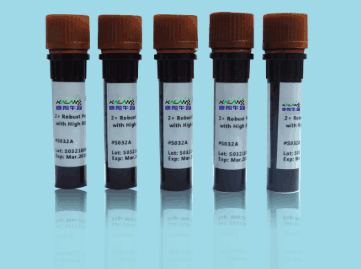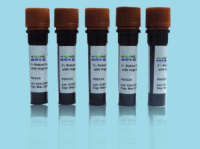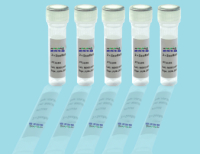

客服电话:021-61998208


CA-125(PT1783) mouse Monoclonal Antibody
CA-125(PT1783) mouse monoclonal antibody
应用:IHC-p 1:100-500
产品名(Product Name)
CA-125(PT1783) mouse Monoclonal Antibody
货号(Catalog No.)
KL-15676
种类(Category)
Primary antibodies
宿主(Host)
Mouse/IgG1, Kappa
反应种属(Species specificity)
Human
应用实验(Tested applications)
IHC-p
克隆性(Clonality)
Monoclonal
偶连物(Conjugation)
Unconjugated
免疫原(Immunogen)
Synthesized peptide derived from human CA-125
状态(Form)
Liquid
储存溶液(Buffer)
Liquid in PBS containing 50% glycerol, 0.5% BSA and 0.02% sodium azide.
存放条件(Storage)
-20°C/1 year
纯化方式(Purity)
The antibody was affinity-purified from mouse ascites by affinity-chromatography using specific immunogen.
产品背景:
domain:Composed of three domains, a Ser-, Thr-rich N-terminal domain, a repeated domain containing more than 60 partially conserved tandem repeats of 156 amino acids each (AAs 12061-21862) and a C-terminal transmembrane contain domain with a short cytoplasmic tail.,function:Thought to provide a protective, lubricating barrier against particles and infectious agents at mucosal surfaces.,induction:Up-regulated in ovarian cancer cells.,miscellaneous:Antigen that is the basis for a widely used serum assay for the monitoring of patients with ovarian epithelial cancer. Due to lack of sensitivity for stage I disease and lack of specificity, it is of little value in the detection of early ovarian cancer. Due to its similarly elevated levels in some nonmalignant conditions, it is not specific enough to be used for population screening.,polymorphism:The number of repeats is highly polymorphic.,PTM:Heavily N-glycosylated; expresses primarily high mannose and complex bisecting type N-linked glycans.,PTM:Heavily O-glycosylated; expresses both type 1 and type 2 core glycans.,PTM:May be phosphorylated. Phosphorylation of the intracellular C-terminal domain may induce proteolytic cleavage and the liberation of the extracellular domain into the extracellular space.,PTM:May contain numerous disulfide bridges. Association of several molecules of the secreted form may occur through interchain disulfide bridges providing an extraordinarily large gel-like matrix in the extracellular space or in the lumen of secretory ducts.,similarity:Contains 14 LRR (leucine-rich) repeats.,similarity:Contains 2 ANK repeats.,similarity:Contains 56 SEA domains.,subcellular location:May be liberated into the extracellular space following the phosphorylation of the intracellular C-terminus which induces the proteolytic cleavage and liberation of the extracellular domain.,subunit:Binds to MSLN. Binding to MSLN mediates heterotypic cell adhesion. This may contribute to the metastasis of ovarian cancer to the peritoneum by initiating cell attachment to the mesothelial epithelium via binding to MSLN.,tissue specificity:Expressed in corneal and conjunctival epithelia (at protein level). Overexpressed in ovarian carcinomas and ovarian low malignant potential (LMP) tumors as compared to the expression in normal ovarian tissue and ovarian adenomas.,
特别提示:本公司的所有产品仅可用于科研实验,严禁用于临床医疗及其他非科研用途!








